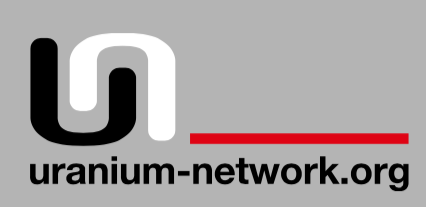www.indigenousaction.org
TAKE ACTION TODAY TO STOP URANIUM MINING NEAR GRAND CANYON!
(Attached images from ADEQ: 1. Uranium hauling routes 2. Canyon Mine)
Denison Mines Corp., a Canadian corporation has submitted water and air quality permit applications to the Arizona Department of Environmental Quality (ADEQ) in an attempt to operate uranium mines near the Grand Canyon.
Not only do these mines directly threaten the Ecoregion of the Grand Canyon, they further corporate attacks on community health, environment and sacred places.
These mines include the currently operating Arizona 1 Mine and the proposed Pinenut and EZ mines north of the Grand Canyon and the proposed Canyon Mine on the south rim near Red Butte, a site held holy by the Havasupai Nation.
The legacy of uranium mining in the region has been so harmful that the Dine’ (Navajo), Hualapai, and Havasupai Nations have all banned uranium mining and activity on their lands.
US Environmental Protection Agency (EPA) has documented well water as undrinkable in at least 22 communities on the Dine’ Nation. The EPA states that, “Approximately 30 percent of the Navajo population does not have access to a public drinking water system and may be using unregulated water sources with uranium contamination.”
The Colorado river which, flows through the Grand Canyon, supplies water for drinking and agricultural use for up to 27 million people.
If all the permits are allowed, up to 12 trucks per day would haul uranium ore from each of the mines to a processing mill in Blanding, Utah.
The haul routes would take uranium ore from the various mines through the communities of Fredonia, Kanab, Williams, Flagstaff, Cameron, Tuba City, and Kayenta.
The ADEQ air quality permits and Department of Transportation regulations would merely require Denison to “cover the haul truck loads with a tarp and maintain the truck beds to ensure that ore does not fall out.” (ADEQ Denison Mines Permitting and Uranium Mining Facts, Questions & Answers November 2010)
Although environmental groups have successfully lobbied the US Secretary of Interior to suspend new uranium claims in a 5 mile buffer zone near the Grand Canyon, the suspension does not include pre-existing claims such as Denison’s.
Today there estimated to be more than 8,000 applications for uranium mining operations in the Grand Canyon region.
Uranium foes: Where’s the benefit?
CYNDY COLE Sun Staff Reporter | Posted: Saturday, January 8, 2011 5:00 am
A Canadian mining company is proposing to open three more mines in northern Arizona — two southwest of Fredonia in Mohave County and one 6 miles southeast of Tusayan that formerly generated deep tribal opposition.
This comes after Denison Mines reopened the area’s first uranium mine on the Arizona Strip in December 2009, removing ore to process at the company’s mill in southeastern Utah.
Environmentalists, local residents and tribal members told the Arizona Department of Environmental Quality not to issue the permits to allow the mines to open during a Thursday night hearing at Sinagua Middle School.
Although they don’t control the mining decisions on these federal public lands, the Coconino County Board of Supervisors and the Flagstaff City Council have each passed resolutions opposing renewed uranium mining.
The Colorado Plateau has some of the more concentrated uranium deposits found in North America.
The Interior Department is considering a request by some to put federal lands on both sides of the Grand Canyon off-limits to mining, but mining claims that pre-date that decision can still open.
Nearly 100 people attended Thursday’s forums, some coming from as far away as Havasupai.
Physician and medical anthropologist Allison Clough, of Northern Arizona University, read a list of common health problems associated with uranium mining, including increased rates of leukemia.
“Uranium mining will not lastingly or meaningfully enrich the peoples of the Colorado Plateau,” she told ADEQ.
Some cried at the microphone, and others were incensed.
“Uranium has already seriously harmed our communities, and you’re considering allowing three more mines to open,” said Klee Benally.
If approved, the three mines would operate with some environmental permits approved in the mid-1980s; the Sierra Club and Center for Biological Diversity are contending those permits are too old.
The Canyon Mine 6 miles southeast of Tusayan (south of the Grand Canyon) was explored in 1978 and permitted to operate in 1986, when mining infrastructure was added but not put to work.
If cleared to open, unrefined ore from that mine is projected to come south to Interstate 40, then through Flagstaff and western portions of the Navajo Nation, including Kayenta.
“It’s a shame. If this should happen, it would go through our community,” said Kayenta Chapter President Stanley Clitso, who says he lost relatives due to uranium-related illness.
“… Presently, our people are still greatly affected by the atrocities that have occurred,” he said.
Another speaker, Flagstaff resident Jim McCarthy, raised the point repeated by many other speakers: A mistake of any size in this new round of uranium mining could be irreversible.
He raised the partial meltdown at Three Mile Island Nuclear Generating Station that released radioactive gases in 1979, the most substantial accident in United States nuclear power generation.
The cause? One malfunctioning valve.
“What blew me away is that they didn’t even consider what could happen if the valve failed open,” rather than failing when closed, McCarthy said.
McCarthy’s company was in the valve-making business at the time.
Author and river runner Michael Ghiglieri asked what the local economic or other benefits of mining would be, given possible environmental risks.
“When there are zero potential gains, why would you take any risks?” he asked.
It’s not a company’s job to think in these terms for environmental risks, but it is the job of a group of state agents is tasked with protecting the environment, he told ADEQ.
“I beseech you to think very carefully about the consequences of your actions,” he said, “because no one will ever forgive you.”
Cyndy Cole can be reached at ccole@azdailysun.com or 913-8607.


